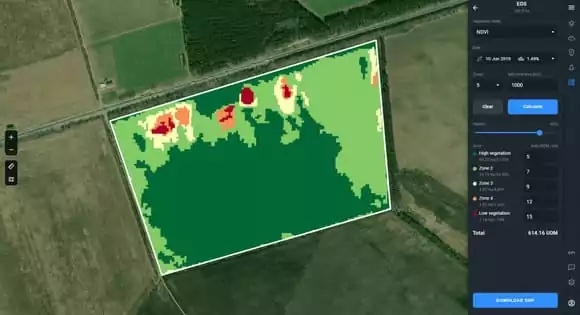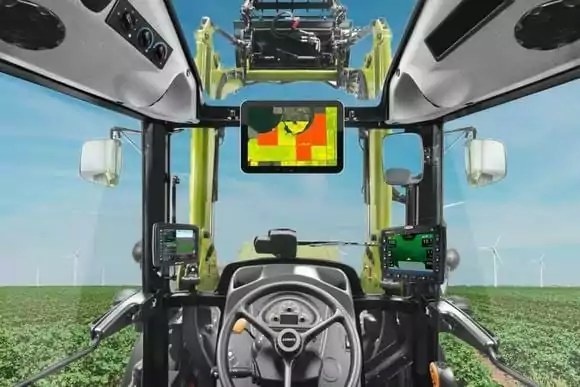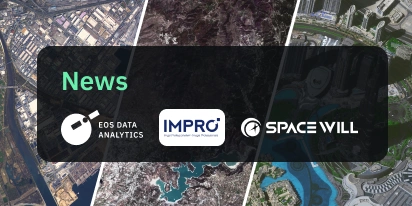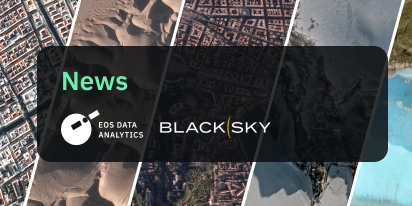
Yield Potential Increase In Each Field Area
Nowadays, a plethora of technologies are used in farming at almost every stage. The concept of precision farming, in particular, is based on the idea that the fields are heterogeneous, meaning that different zones of fields should be treated differently: some require more intensive treatment, others less.
Taking this concept into consideration when elaborating on work plans, farmers are able to optimize fertilizers, pesticides, plan seeds, and irrigation in a competent way. As a result, they minimize input and maximize output.
The most important point of all is the fact that modern technology and precision data allow farmers to make well-timed and effective business decisions.
And That’s How It Works
Currently, an impressive list of technologies is available on the market. Satellite data tops the list as it is used to create digital field maps that allow farmers to remotely perform crop health analysis using vegetation indices; apps that enable calculations of fertilizer and pesticide application rates for each field zone, smart machinery, wide ranges of wireless sensors to monitor soil conditions, moisture, temperature, etc. And the list goes on. This list of features is constantly being updated with new technologies, it’s important to stay updated to be in the know.
How To Increase The Productivity Of Every Zone?
Our main goal is to get the most out of each acre from zones with different productivity rates, and optimize the costs so that one will be spending fewer resources. To that end, one should zone the field. In a more complicated tone, to cluster field areas according to the vegetation levels and not treat the entire field equally, but to treat each zone according to its individual needs. This will help greatly when planning fertilizers, pesticides, fungicides, and sowing.
EOSDA Crop Monitoring
Fields analytics tool with access to high-resolution satellite images for remote problem areas identification!
How To Make Field Zoning
In order to perform variable rate application in the field, you should identify the areas with which the vegetation levels are considerably different. There are two possible ways to meet this challenge, let’s consider both possibilities. The first approach involves using the latest satellite imagery, which helps to identify such zones according to the current state of vegetation. The second approach requires using a time series analysis for a certain period of time, which allows the user to determine productivity zones and derive some trends within these specific areas.
In the event that a satellite imagery approach is taken, you can simply get the latest satellite images and apply the required vegetation index.
The second approach is more time-consuming, as it requires comparing the vegetation maps dated by different years, analyzing patterns, and drawing the conditional boundaries of the areas with different levels of productivity.
In EOSDA Crop Monitoring we combine several approaches, namely, using both the latest and historical high resolution-satellite data.
All you need is an internet connection and the service will do the work for you. It is worth noting that the assessment of productivity zones, at least for the last five years, will bring you the best possible understanding of the state of your fields.

What’s Next? Differential Sowing!
The cost of sowing material itself accounts for a large share of all of the farmer’s expenses during the season. Therefore, its rational use will save money, which can be used to upgrade your farm.
This is where differential sowing will come in handy, it involves the use of fewer planting material in areas with low productivity and vice versa. High productivity zones meet the conditions that contribute to a high level of plant vegetation, therefore, more sowing material can be applied there.
Meeting Other Challenges With Field Zoning
Here is another thing, area productivity is influenced by a huge number of factors. The main one being the terrain, since fertilizers tend to be washed from the high ground to lowlands. The soil condition may worsen for other reasons as well, for instance, due to the occurrence of wind and water erosion, salinization, alkalization, and desertification processes. As a result, the productivity of these areas is significantly reduced.
In this case, field zoning provides an opportunity to create specific prescription maps for differential sowing, which helps to eliminate overlaps and prevent the waste of valuable seeds. In the event that field zoning is used with time series, one should evaluate field areas with the lowest/highest productivity and adjust the amount of sowing material in accordance with the indicators of a specific zone.
Moreover, determining productivity zones during the sowing period helps with the application of phosphate and potassium fertilizers, which are especially important at this particular stage of the season. For example, high productivity areas need more potassium and phosphorus, because with active growth, plants absorb more nutrients.
Fertilizer Distribution
OK, we’re done with sowing, what’s next? Moving on to fertilization. The differential application of N-fertilizer during the vegetation period involves a personal touch to the nutrition of crops on every field zone.
Such technology will save resources by applying the exact amount of fertilizer needed to optimize the development of crops in each zone. Moreover, differential fertilization reduces environmental impact and makes your farm eco-friendly, since regular application of large amounts of nitrogen negatively affects the soil microbiota and groundwater.
As a result of the denitrification processes, nitrates are recovered to nitrites and then to gaseous oxides, which have a significantly greater greenhouse effect than carbon dioxide. On top of the environmental pollution, exceeding the norms of nitrogen application negatively affects human health due to the accumulation of nitrates and nitrites in agricultural commodities.
The differential application of N-fertilizers should be performed using the latest satellite image only, right after a drop of the vegetation index is detected. Otherwise, the loss of precious time can turn into a disaster.
Ag Chemicals Going Smart
Differential application of pesticide is aimed at reducing the consumption of this class’s agents and increases the accuracy of their use. To precisely treat the affected area, you can easily determine the best solution using the latest satellite image.
The creation of crop-spraying maps also plays a huge role in this process. Through the use of digital maps and GPS navigators, one can minimize the human factor and prevent wasteful and inefficient application of pesticides, which affects the soil microflora. As a result, poor application leads to a yield decrease, a higher amount of agents used, and even crop failure.
Turn Field Data Into Effective Management Decisions
Using the zone management option and agrochemicals application maps from EOSDA Crop Monitoring, farmers are able to completely eliminate improper fertilizer and pesticide usage. Our maps are compatible with every standard combine harvester software. Simply download these maps to a flash drive and transfer them to the desired software in order to get started. Thus, you will have an opportunity to identify problem areas for primary treatment, prevent the spread of diseases and pests, save on pesticides through treating only the areas that really need it, and not spend extra time treating healthy areas.
Prescription Maps Based On Real-Time Crop Needs
Let’s consider this issue of a real use-case:
Description
During sowing, the driver operates a tractor without an on-board computer, which leads to a 20 cm line overlap at each turn.
As a result, fertilizer and pesticide are double-rowed, therefore, on a 100-hectare field, this will increase the farmer’s expenses by almost 5%! Another issue will be the emergence of weeds that “oppress” neighboring plants within the areas missed by the driver, so the gaps tend to be ploughed and re-sown, and this is even more costly and expensive.

Solution
If the machinery is equipped with onboard computers and GPS navigators, such an issue will never arise, since precise navigation will prevent the appearance of overlaps or missing areas. Field zoning in EOSDA Crop Monitoring is an easy way to create prescription maps and to reduce fertilizer and pesticide consumption. Such an approach will make it possible to forget about re-sowing specific areas, which leads to significant savings in both time and money.
Let’s Take Stock
Field zoning, as well as differential field treatment, is a genuine opportunity to cut costs and increase profits. The benefits of this method are obvious, and the way to make field zoning work is an easy-to-use and powerful agro-platform. Implement effective seed management, increase yield, reduce running costs, and improve time management using the field zoning feature from EOSDA Crop Monitoring.
About the author:
Kateryna Sergieieva has a Ph.D. in information technologies and 15 years of experience in remote sensing. She is a Senior Scientist at EOSDA responsible for developing technologies for satellite monitoring and surface feature change detection. Kateryna is an author of over 60 scientific publications.
Recent articles

EOSDA LandViewer Black Friday Sale: Exclusive Offers & Giveaway
This Black Friday, LandViewer offers new users the chance to save on monthly plans, get extra months with yearly subscriptions, and participate in a free annual plan giveaway.

EOSDA LandViewer Adds SpaceWill And Improsat Sources
EOSDA LandViewer expands with new SpaceWill and Improsat satellite data sources. This means higher resolution and more frequent revisits for accurate monitoring.

BlackSky Imagery Expands The EOSDA LandViewer Offering
EOSDA LandViewer has expanded its capabilities by reselling BlackSky imagery. With better detail, more revisits, and flexible tasking, it’s easier than ever to follow changes on the ground.